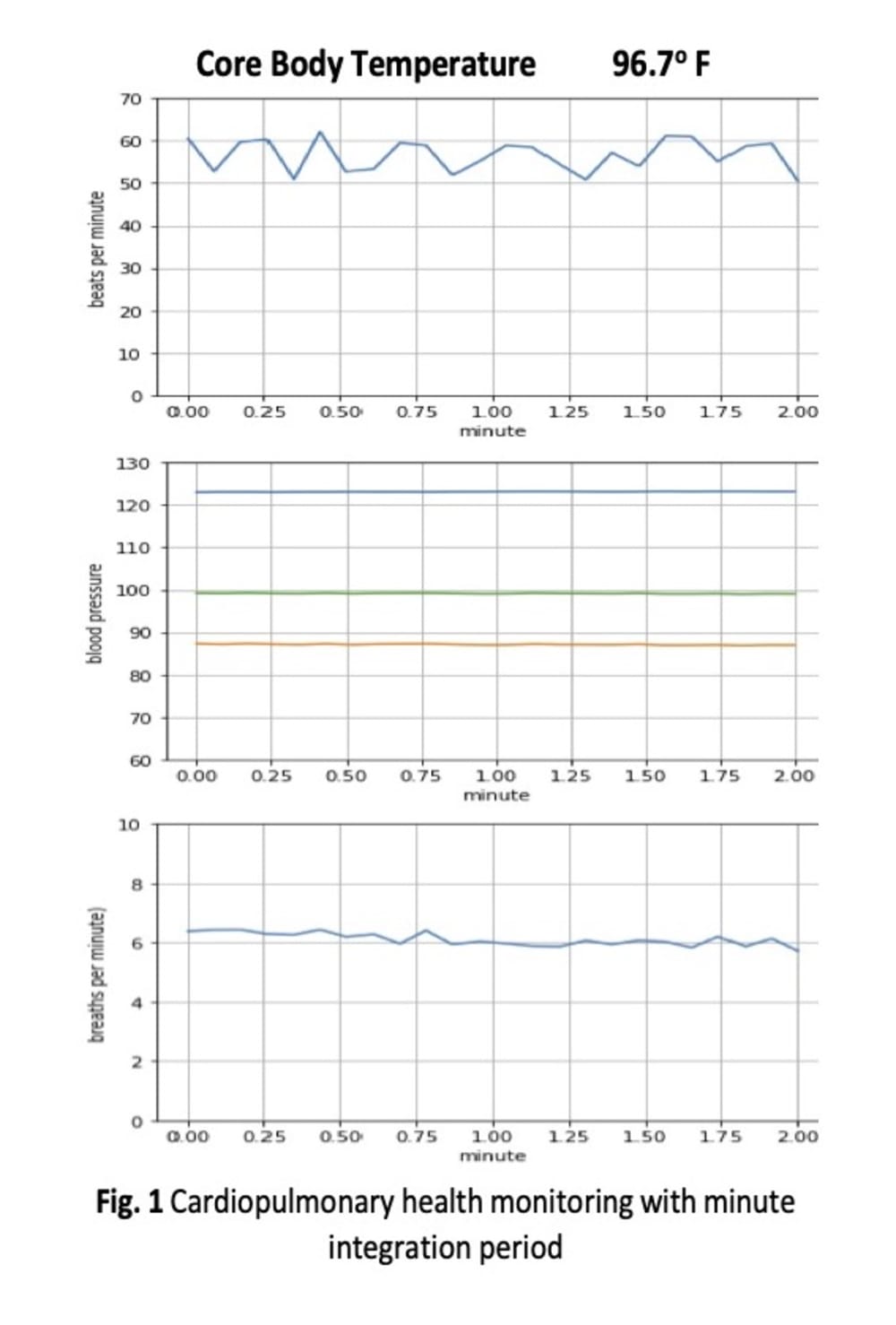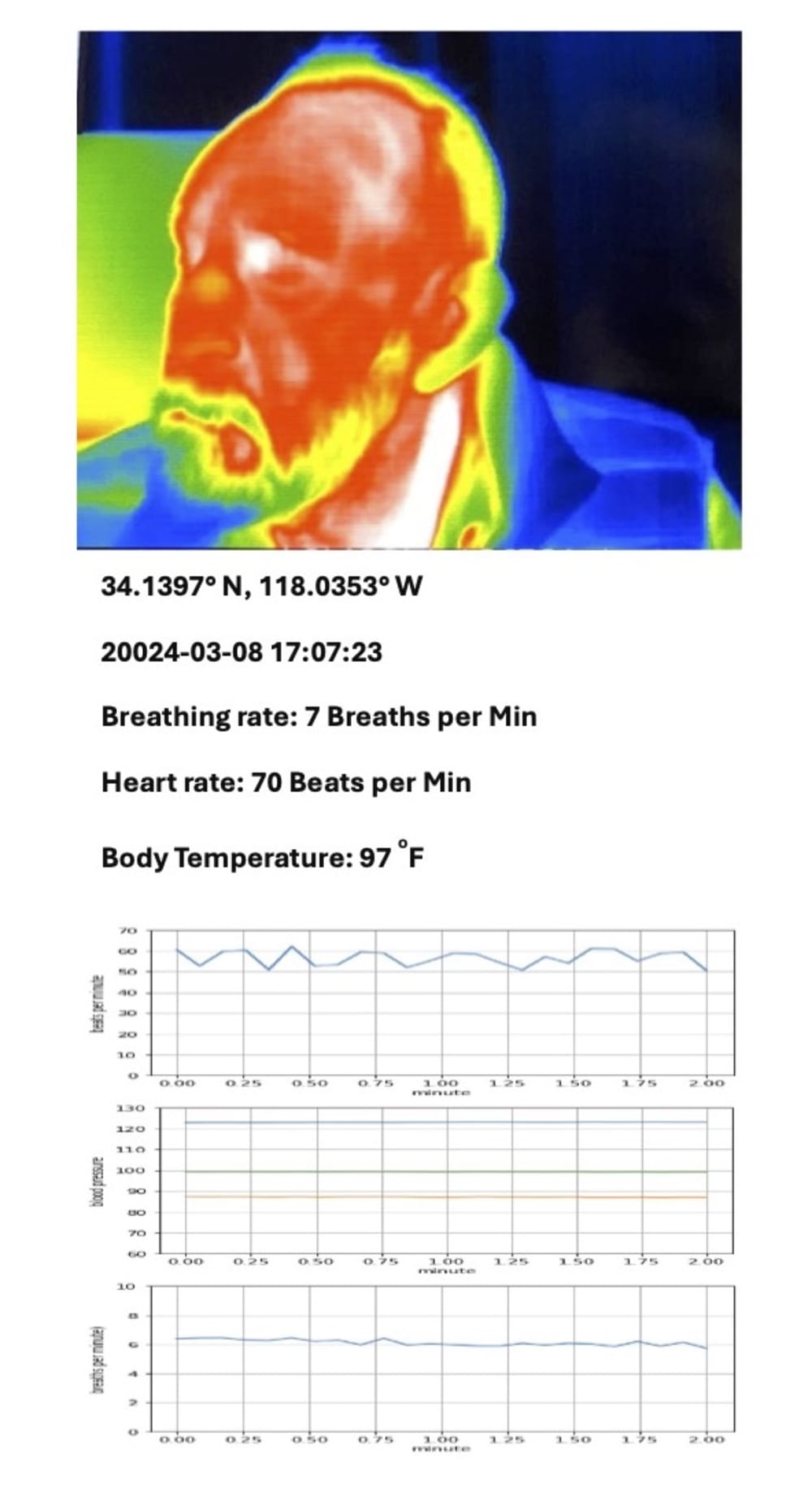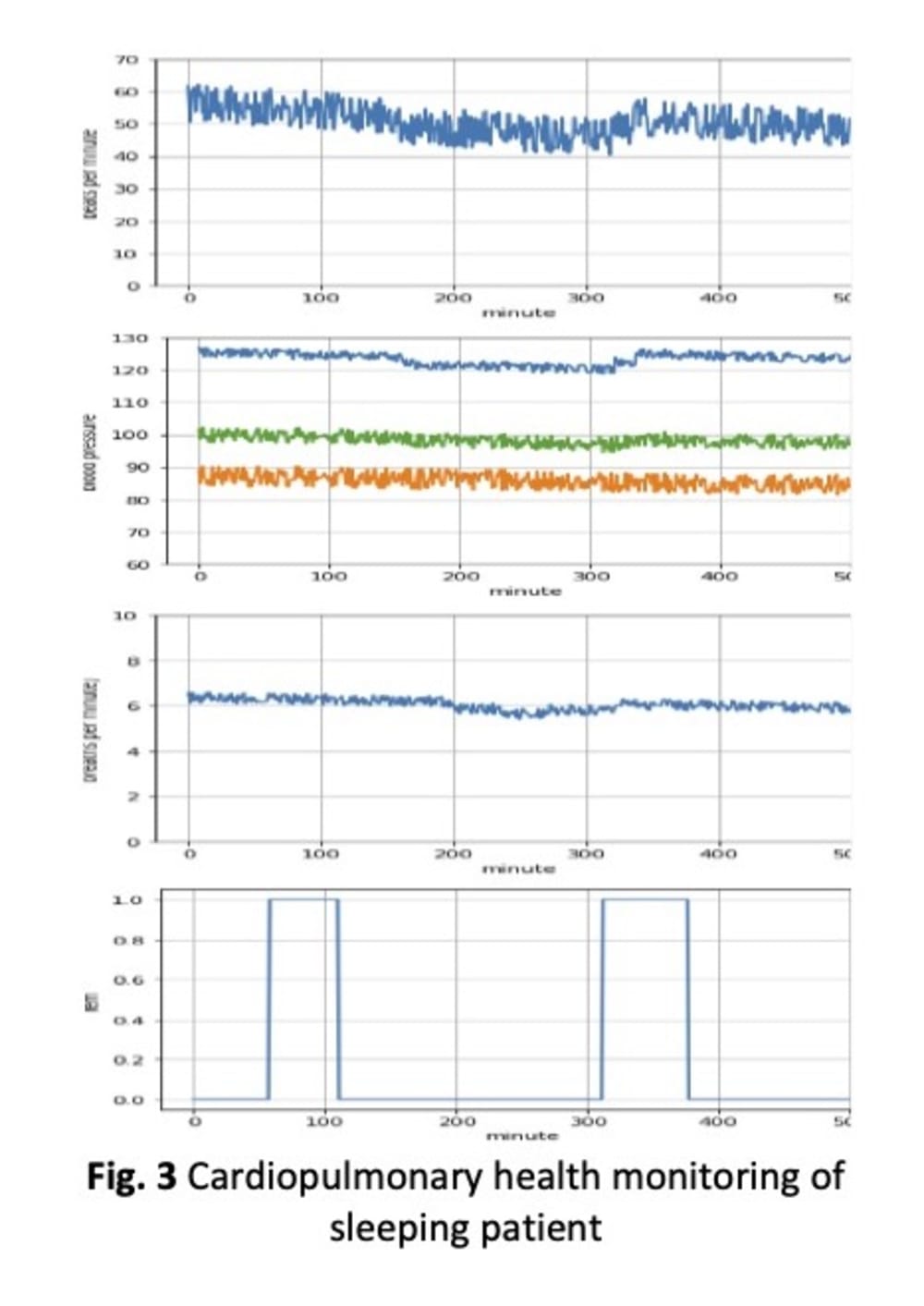
Noncontact cardio metrology utilizing mid-infrared (MIR) technology represents a significant advancement over traditional contact monitoring systems. MIR videogrammetry enables comprehensive physiological assessment of vital signs, including cardiac, respiratory, plus core and skin temperatures. This approach offers enhanced efficiency, patient comfort, and superior signal quality compared to visual bandwidth methods, reduces patient discomfort, risk of nosocomial infections, and allows for continuous long-term 24/7 monitoring. The technology demonstrates remarkable resilience to environmental factors, maintaining signal stability during subject movement and functioning effectively in various lighting conditions including complete darkness. A key advantage of MIR technology is its consistent performance across all skin types, as the emissivity of human skin in the MIR spectrum is uniformly near-perfect black body and unaffected by melanin content, unlike for visible light.
Thermal plethysmography using mid-infrared imaging enables non-invasive arterial pulse waveform analysis, capturing thermal variations in superficial arteries during the cardiac cycle. To develop a predictive model for estimating blood pressure from these thermal waveforms, calibration with continuous invasive blood pressure measurements is crucial. This process correlates thermal waveform features with actual blood pressure values across various physiological states. The model uses advanced signal processing and machine learning to extract relevant waveform characteristics. Calibration involves simultaneous recording of invasive blood pressure and thermal plethysmographic data under different hemodynamic conditions to train and validate the model.
There is a critical need for advanced non-contact physiological monitoring systems capable of providing comprehensive health assessments. Offering continuous, long-term (24/7) monitoring with accurate and reliable predictions of vital signs, including systolic and diastolic blood pressures. The solution eliminates patient discomfort, minimize the risk of nosocomial infections, and reduces measurement artifacts associated with traditional contact-based methods.
The development of this system has significant implications for both clinical and personal healthcare settings. In personal environments, these vital sign assessments could provide valuable data to telemedicine professionals, enabling more informed remote healthcare decisions and potentially improving patient outcomes through early detection of health issues.
-
Awards
-
 2024 Top 100 Entries
2024 Top 100 Entries
Like this entry?
-
About the Entrant
- Name:Frank Hartley
- Type of entry:individual









